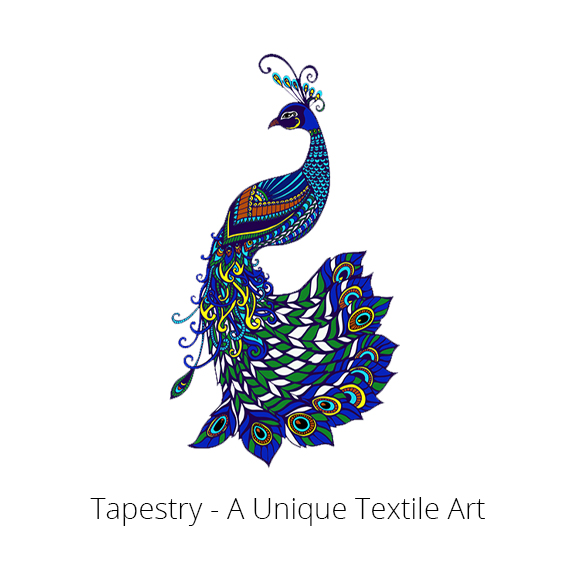Tapestry – A Unique Textile Art

Tapestry is an ancient textile art form that employs hand-weaving techniques to create textile crafts on a vertical loom. Similar to most woven textiles, a tapestry also includes two basic components of weaving, the warp, and the weft. The horizontal threads are known as weft, and the vertical threads are known as warp.
In tapestry, the artisans utilize wefts of different colors to work over the portions of warp and create a piece of craft that resembles a painting. This unique textile art incorporates a technique called weft-faced weaving, where the warp threads remain hidden in the finished work. Even though they are hidden, it is the vertical warp threads that provide support to the horizontal weft thread.
Tapestry is created by repeatedly weaving the wefts over the warps. It is a pictorial art that is intricate in nature and requires quality workmanship to design and craft. So most of the historical tapestry works were intended to hang on a wall. Such works included European, Chinese, Pre-Columbian Peru, and many other traditions.
The Tapestry artworks in Europe were mostly made to be viewed from one side, while traditions like Chinese Kesi (a technique in Chinese silk tapestry) adopted designs that can be seen from both sides.
The warp threads in tapestries were usually made from wool, linen, and cotton, while the wefts included various alternatives like silk, gold, and silver, along with ordinary weaving thread materials.
Embroidery vs Tapestry – What’s the difference?
Embroidery is the craft of decorating fabrics using needles and threads. It is simply decorating the fabrics with beautiful designs. However, with tapestry the artisans make stitching on an open grid, creating a fabric out of stitches. The finished work could be very large with cross stitches & dozens of figures.
Tapestries can be also considered a part of the embroidery in a way, for example, the popular Bayeux Tapestry ( an embroidered cloth nearly (230 ft) long, depicting the events leading up to the Norman Conquest of England in 1066) in fact is an embroidered work.
Tapestry Production
For weaving tapestry, the weavers utilized various designs of looms. The artisans usually work on the back of the piece, normally by following a full-size drawing, a painted cartoon, or another tapestry. The cartoon will be traced onto the warp lines and then placed where it is visible, sometimes with the help of a mirror, when it is hung behind the weaver. The weft threads add color to the finished work. They are introduced where the design demands a portion of a particular color.
Tapestries are generally woven by hand, but later, technological innovation brought the chances of machine-woven tapestries. Today, you can find both hand-woven and machine-woven tapestries with unique designs. Despite a glorious history, the tapestry is a simple weaving technique that can be used to create beautiful and intricate designs of artwork.
Qube Art brings you a plethora of uniquely crafted tapestries and similar wall hangings featuring extraordinary designs by independent artists. They offer a creative vibe and imagination for your favorite room spaces. The easy-to-hang wall paintings also showcase your passion for art along with bringing a distinctive style of decoration.




